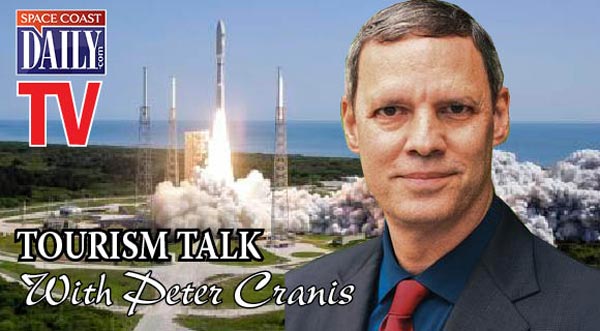THIS DAY IN HISTORY: Space Shuttle Atlantis Launches from Cape Canaveral 25 Years Ago
By Space Coast Daily // May 19, 2025
May 19, 2000

BREVARD COUNTY • CAPE CANAVERAL, FLORIDA – After a series of weather-related delays in April, NASA’s Space Shuttle Atlantis successfully launched from Kennedy Space Center’s Launch Pad 39A, beginning a 10-day mission focused on bolstering the infrastructure and readiness of the International Space Station (ISS).
Lifting off on schedule, the shuttle carried a crew of six American astronauts and one Russian cosmonaut, tasked with what NASA officials described as a vital “home improvement” mission to the fledgling ISS. The launch had been postponed multiple times due to high winds at both the Cape and designated overseas emergency landing sites.
A highlight of the mission was a six-hour, 44-minute extravehicular activity (EVA) — the fifth spacewalk dedicated to ISS construction and the 85th U.S. EVA overall. Mission Specialists James Voss and Jeffrey Williams completed a range of key tasks outside the station, including:
– Securing a U.S.-built crane that was previously installed
– Finalizing the assembly of the Russian-built Strela crane on the Pressurized Mating Adapter-1
– Replacing a malfunctioning communications antenna
– Installing several handrails and a camera cable to aid future operations
Mission Specialist Mary Ellen Weber skillfully operated the shuttle’s robotic arm throughout the EVA, maneuvering Voss during several portions of the complex spacewalk.

Following the spacewalk, the crew shifted their focus inside the ISS. After systematically opening a series of hatches leading from Atlantis to the station’s internal modules—including PMA-2, Unity, PMA-1, and Zarya—the astronauts spent three days outfitting the ISS with critical upgrades and supplies.
Key improvements included:
– Installation of four batteries and associated electronics
– Addition of ten new smoke detectors in the Zarya module
– Replacement of four cooling fans and installation of supplemental computer cables
– Integration of a new communications memory unit and power distribution box
The astronauts also transferred over 3,300 pounds of equipment and supplies, ranging from practical tools and clothing to fitness equipment and even an IMAX camera. Additionally, four 12-gallon water containers were filled and stored for use by future ISS inhabitants.
Commander Brent Jett Halsell and Pilot Scott Horowitz conducted three jet firings during the mission to raise the ISS orbit by approximately 27 miles, positioning it at a new altitude of 225 miles.
Upon completion of all objectives, the crew sealed the ISS hatches—concluding their internal work at 4:40 a.m. EDT on May 26. Later that evening, Atlantis undocked from the space station at 7:02 p.m. and completed a half-circle flyaround before executing a final separation burn at 7:41 p.m.
The mission marked another pivotal step in the assembly and long-term viability of the ISS, as the space station prepared for its first long-duration crew to arrive later in the year.












